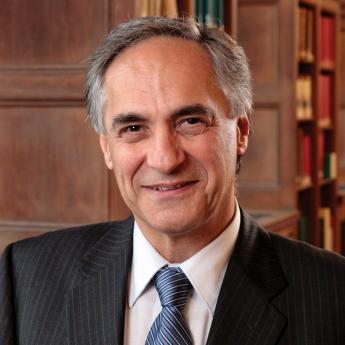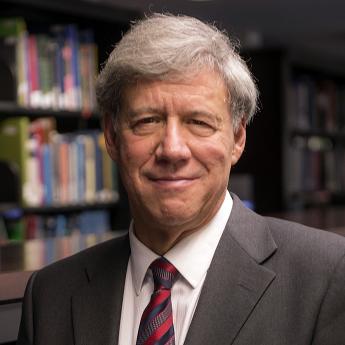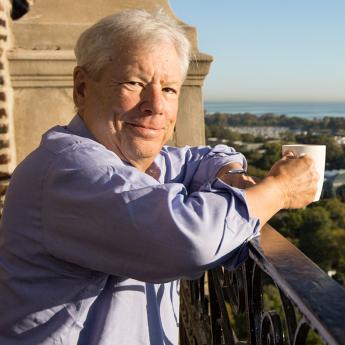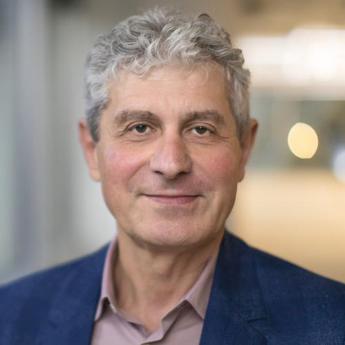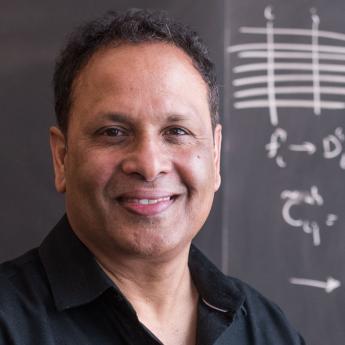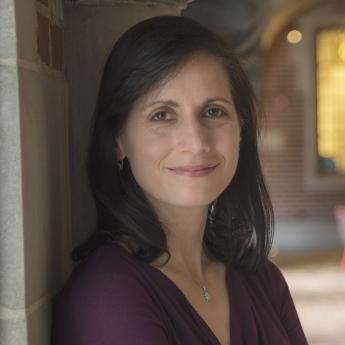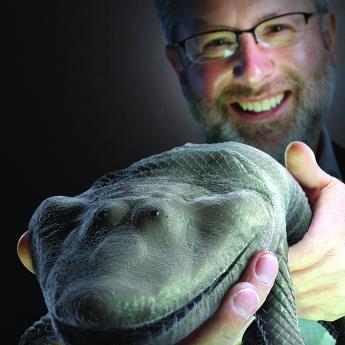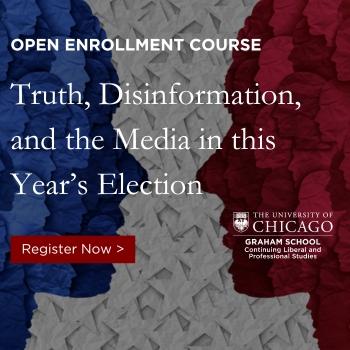Show Notes
The United States is facing a real mental health crisis. In the last few years, one possible treatment has gotten a lot of press: psychedelic drugs. But what is actually happening in a person’s brain when they take a psychedelic? Could understanding the biology and the chemistry allow us to make better and safer versions of these drugs—and maybe even create psychedelics without the hallucinations?
In this episode, we speak with Assoc. Prof. David E. Olson, founding director of the UC Davis Institute of Psychedelics and Neurotherapeutics. Olson and his lab have been researching the therapeutic effects of psychedelic drugs and how they could be used to treat neuropsychiatric diseases, including depression, anxiety disorders and even addiction. His lab’s is researching how to develop non-hallucinogenic psychedelics, also called next-generation neurotherapeutics.
Subscribe to Big Brains on Apple Podcasts and Spotify.
(Episode published January 11, 2024)
Subscribe to the Big Brains newsletter.
Please rate and review the Big Brains podcast.
Related:
- Top psychedelic researchers featured in new video series — UC Davis Health
- Researchers identify a psychedelic-like drug without the hallucinogenic side effects — EurekAlert
Transcript:
Paul Rand: Everywhere you look these days, you'll see news stories about a resurgence in the use of psychedelic drugs. And they're not just being used to, as the famous counterculture Harvard psychologist Timothy Leary said in the 1960s.
Timothy Leary: Turn on, tune in, drop out.
Tape: Some psychiatrists and researchers are giving psychedelic drugs a second look as a possible way of treating depression and some mental illnesses.
Tape: A new clinical study finds a single dose of psychedelic mushrooms, along with talk therapy can be used to treat depression.
David E. Olson: Something that's interesting about psychedelics is they seem to work across indications. There's some evidence that they might be useful for depression, but also anxiety disorders, headache disorders, substance use disorders.
Paul Rand: That's David Olson, a professor at the University of California Davis, where he's the founding director of the Institute for Psychedelics and Neurotherapeutics.
David E. Olson: I've often heard this said that neuroscience and neuropsychiatry in particular is where cancer and biology was 20 or 30 years ago, and I think we're really at the cusp of some major, major discoveries that can really transform the way we think about improving mental health.
Paul Rand: So maybe you've seen one of the many documentaries about people taking psychedelics and having their lives dramatically changed. And even maybe you've thought to yourself, I would love to have that experience, but I don't want to have the hallucinations. Well, that's exactly what Olson's lab hopes to achieve.
David E. Olson: We are starting with compounds that have known clinical efficacy. Molecules like psilocybin, MDMA, and ketamine, and we're reverse engineering them to make them better versions of themselves to make them more efficacious and safer.
Paul Rand: Imagine being able to get all the neurophysiological benefits of psychedelics without the trip.
David E. Olson: Our novel compounds are producing therapeutic efficacy that is comparable to these first-generation molecules, and we can use traditional antidepressants as negative controls. And so what we're looking for are new drugs that produce effects that are as rapid and sustained as molecules like ketamine and psilocybin but that lack the subjective effects.
Paul Rand: If we could make these drugs safer and more widely available, we could use them to help address our mental health epidemic
David E. Olson: Conditions like depression, PTSD, substance use disorder, and others are incredibly prevalent. Some estimates have said that one in five people will suffer from a neuropsychiatric disease at some point in their lifetime. We're talking about a billion people worldwide, and so this is an incredibly huge unmet medical need.
Paul Rand: As the current U.S. surgeon general recently said.
Vivek Hallegere Murthy: We're living in the middle of a mental health crisis. We have nearly 60 million Americans who are struggling with their mental health, but this is global. Nearly a billion people around the world are living with a mental health condition. So mental health has become the defining public health issue of our time.
David E. Olson: We really haven't seen anything new since the SSRIs were developed back in the late 80s, and psychedelics are starting to show a lot of promise for treating these various conditions.
Paul Rand: Welcome to Big Brains, where we translate the biggest ideas and complex discoveries into digestible brain food. Big Brains, little bites from the University of Chicago Podcast Network. I'm your host, Paul Rand. On today's episode how psychedelics could be used to improve mental health. We seem to be in a period where there is a great deal of attention on psychedelics, almost like they're getting a rebirth. And I wonder if you could talk about what in the world caught your attention when, really, much of the focus on psychedelics had wound down and we were not necessarily that enlightened.
David E. Olson: First, it's important to remember that there has been a very rich clinical history on the use of these compounds for treating various neuropsychiatric conditions. Before the passage of the Controlled Substance Act, there was a lot of clinical research on compounds like LSD, and psilocybin, and others, demonstrating that they might be useful for conditions like alcohol use disorder or depression.
Paul Rand: It may be a surprise to some, but from much of the 1950s and 1960s, scientists were already studying psychedelic substances as if they were any other drug.
Tape: Their recreational use exploded in the swinging 60s, but Western science had had an interest in psychedelic drugs for decades before they were used in psychiatric medicine.
Paul Rand: But their ability to explain what these drugs were really doing inside the brain was limited.
David E. Olson: When psychedelics were originally discovered, we didn't know very much about the brain. We barely knew that there were neuromodulators like serotonin and dopamine in the brain, and we definitely didn't know about a lot of the various neural circuits that mediate behavior.
Paul Rand: And before neuroscience could catch up with therapeutic effects that doctors were observing the study of these substances were swept up with Nixon's war on drugs.
Richard Nixon:
America's public enemy number one in the United States is drug abuse. In order to fight and defeat this enemy, it is necessary to wage a new all-out offensive.
Paul Rand: It's only been recently that scientists have been allowed to take them back out of the box and get to the bottom of what was being observed in the 60s by using new tools and methods.
David E. Olson: Now we have modern tools of neuroscience, of systems neuroscience, of molecular neuroscience, and that is really allowing us to interrogate the mechanisms of psychedelics with a precision that has not been possible before. And I became really interested in this field when I started learning more about the effects of ketamine. Now, ketamine is a dissociative anesthetic that's been used in medicine for many, many years, but it wasn't until about the year 2000 when we realized that ketamine might have some fast-acting antidepressant properties.
Tape: You've probably seen the ads, depending on where you live. They're all over social media. We're talking about clinics offering ketamine. It's a hallucinogen known to many people as a party drug. But after more than 20 years of research, some clinics are now using ketamine in combination with psychotherapy to treat a variety of mental health conditions.
David E. Olson: It was a lot of pioneering work from researchers at Yale, John Chrystal, and others who had demonstrated that ketamine had these rapid antidepressant effects, but then follow-on mechanistic work by people like the late Ron Duman, and the late George Aghajanian. They really demonstrated potentially how ketamine was impacting the brain, and they were really showing that it had this remarkable ability to promote the growth of key neurons in parts of the brain that regulate mood, motivation, fear, and reward. And so it was with this mechanistic understanding of how ketamine seemed to be operating, that I became very interested in trying to identify molecules that produced ketamine-like effects on brain structure, but maybe had some advantages. And that's what really led us to study the psychedelics.
Paul Rand: Help me understand what's happening inside the brain when these psychedelics are taken and they're working.
David E. Olson: So I think the big question is what do you consider to be a psychedelic? Because I think that's the first category that trips a lot of people up, no pun intended.
Paul Rand: A little psychedelic humor from the doctor.
David E. Olson: So classic serotonergic psychedelics are molecules that activate a particular serotonin receptor called the 5-HT2A receptor and, in turn, produce very profound subjective experiences. And so these are the type of experiences you would feel after taking a drug like LSD or psilocybin. Those are classic psychedelics. There are other drugs that have different pharmacological mechanisms that might produce some overlapping phenotypes but are distinct, and a drug like ketamine would fall into that category. Typically, ketamine is not considered a psychedelic. It's typically called a dissociative anesthetic. Molecules like PCP would also fall into that particular category. And then there are other drugs like MDMA, who are very different than psychedelics, but tend to get lumped into this category. I do not consider MDMA to be a psychedelic. In fact, MDMA is very different than psychedelics, probably even considered to be non-hallucinogenic. And so just because a drug makes you feel something does not make it necessarily a psychedelic.
Paul Rand: As anyone who's taken one of these drugs knows, the most important trademark of classic psychedelics is that they can make you hallucinate. For example, maybe you'll see kaleidoscope colors or moving objects.
David E. Olson: One of the characteristics of psychedelics that have definitely limited their clinical application and their broad therapeutic applicability has really been the subjective effects, the hallucinations. These are very powerful substances, and if not used appropriately, there can be deleterious consequences.
Paul Rand: In other words, what if you have a bad trip? And even worse, what if you can't come out of it unharmed?
David E. Olson: And so if you have a family history or predisposed to developing something like a disease like schizophrenia, it's quite possible that psilocybin might induce a psychotic break. If you have an anxiety disorder that psilocybin can cause a really acute anxiogenic episode, that can be incredibly, incredibly terrible.
Paul Rand: So what if you could just get rid of the hallucinations and keep the rest of the drug? Would it even be possible and what benefits could it have? Those were questions Olson and his lab set out to answer.
David E. Olson: So the Institute for Psychedelics and Neurotherapeutics, we also call it the IPN for short, is a new initiative here at UC Davis that has two major points of emphasis. One is to understand the mechanisms by which psychedelics impact the brain, and then the second goal is to take that information and translate it into newer, more efficacious, and safer therapeutics for a variety of different brain conditions. We do a lot of things in our lab, and one thing I want to emphasize is that psychedelics have never been engineered to be therapeutics. It turns out they might have therapeutic properties, but they weren't designed specifically to be optimized therapeutics. And so a lot of what we do is we use medicinal chemistry to engineer new variants that have desirable properties for different indications. In some cases, that might be novel hallucinogenic compounds. If we want to keep in the hallucinogenic aspects, we might want a compound like that. But for instance, maybe we want to compound that lacks the cardio toxicity associated with some of these other psychedelics, or maybe it has other improvements in efficacy or safety.
Paul Rand: The new psychedelics that Olson and his lab are trying to develop could come in different shapes and sizes, and they would have wide-ranging effects. Better yet, they may even revolutionize the medical space for antidepressants. That's after the break.
If you're enjoying the discussions that we're having on this program, there's another University of Chicago Podcast Network show that you should check out. It's called The Pie. Economists are always talking about The Pie, how it grows and shrinks, how it's sliced, and who gets the biggest share. Join veteran NPR host Tess Vigeland as she talks with leading economists about their cutting-edge research and key events of the day. Hear how the economic pie is at the heart of issues like the aftermath of a global pandemic, jobs, energy policy, and more.
Maybe giving folks a basic understanding of some of the disorders that you were talking about, whether it's depression, or anxiety, or substance abuse, or PTSD, or otherwise. How do these disorders actually manifest in the brain and maybe setting the stage for why some of these compounds actually work?
David E. Olson: So it's important to remember that there's not a single type of depression. There's not a single type of anxiety disorders. There are many, many subsets, but there are some commonalities. And in certain patient populations, there are physical changes in the structure of the brain. In particular, a region of the brain known as the prefrontal cortex. The prefrontal cortex is the so-called executive control center of the brain. It talks to a whole bunch of other subcortical regions that regulate fear, and motivation, and reward. And so it's perhaps unsurprising that PFC dysfunction is a hallmark of many of these types of neuropsychiatric diseases.
Paul Rand: Picture your brain like a forest, and all of those trees are like the neurons in your brain.
David E. Olson: So it turns out that neurons look a lot like trees. And so if you were looking at the structure of a neuron, the dendrites would look like the branches of the trees. And then growing off of those branches are little, tiny nubs. Those are called dendritic spines, and they would be kind of analogous to the leaves of the tree. And the dendritic spines are what makes contact with other neurons for neuronal communication.
So if you have a forest that has a very rich canopy, there's a lot of contact from tree to tree, the arborist comes in and prunes back all of the branches, or it's winter and all of the leaves fall off, then you're going to have a lot less contact. And the less contact you have, the less communication you have between the partners. And so if you actually peer into the brain of patients with many of these so-called stress-related neuropsychiatric diseases, what you will often find is that there will be atrophy of the prefrontal cortex and other brain structures like the hippocampus with other physical changes such as the growth of neurons in an area of the brain called the amygdala as an example.
Paul Rand: When you say atrophy, what does that actually mean and what does it look like in the PFC part of the brain?
David E. Olson: It's the physical withering of the neuron. So the branches retract, synapses are lost. If you lose those synapses in the prefrontal cortex, those neurons cannot communicate with their neighbors as effectively, and therefore they can't perform their normal functions. And that's what ultimately leads to the disease symptoms. In my mind, this is damage that can be repaired, and molecules like ketamine, like psychedelics, and like some of the novel non-hallucinogenic compounds that our group is developing, they seem to repair these damaged neural circuits. They regrow these key cortical neurons.
Paul Rand: When the neurons in your brain can't make those vital connections, that's when you can face all kinds of mental conditions, like depression and anxiety. But if you're wondering, why do we need something as intense as psychedelics to solve this problem when there are already medications like antidepressants? Well, it turns out they were designed with a different purpose in mind, to fix what was thought to be a chemical imbalance, not a neural circuit issue.
David E. Olson: So that is called the monoamine hypothesis of depression. And it was really developed to try to explain the efficacy of selective serotonin reuptake inhibitors like Prozac that were developed in the 1980s or so. What we knew about those drugs at the time is that they're very good at blocking a transporter of serotonin that kind of sucks it out of the synaptic cleft. And what that leads to is an immediate increase in synaptic levels of serotonin. So therefore, the hypothesis was that there must be a chemical imbalance in serotonin, and if we can increase synaptic levels of serotonin, we can have a drug that would ameliorate the symptoms of depression. However, there was always a huge issue with that theory, even from the beginning. And the issue is this; almost immediately after taking an SSRI, synaptic levels of serotonin increase, but patients tend to not feel better until they take the drug daily for weeks to months.
And that temporal discrepancy bothered a lot of scientists for a long, long time. And so there was a competing hypothesis about depression known as the neurotrophin hypothesis of depression. And that hypothesis is really related to this cortical atrophy. And what this hypothesis had noted is that pretty much every single antidepressant treatment that we know of seems to promote the growth of these key cortical neurons in the brain. They just do so on a timescale that correlates with their clinical efficacy. So even traditional antidepressants like SSRIs promote the growth of these cortical neurons; they just do so very slowly, whereas a drug like ketamine can do it rapidly. So I do believe that the neurotrophin hypothesis of depression has been validated more than this monoamine hypothesis of depression. Now, that's not to say that SSRIs don't work, it just might be that they work via a different mechanism than they were originally designed for.
Paul Rand: What Olson and his lab are developing could be just as effective as SSRIs, but even better, they would work almost immediately.
David E. Olson: We have been developing non-hallucinogenic variants that can still produce these effects on cortical neuron structural plasticity and still produce very robust, sustained therapeutic effects even after a single administration. They tend to start working within 24 hours. This is really remarkable that you can take one or a few doses of a drug and produce long-lasting effects after the drug has been cleared from the body. And this is, our group coined a term called psychoplastogens.
Paul Rand: Explain the term a little bit better; psychoplastogens.
David E. Olson: Yeah, psychoplastogen was just referring to plasticity-promoting therapeutic molecules that can promote the growth of key neurons very rapidly and produce long-lasting effects after a single administration. So it turns out that molecules like ketamine, LSD, and MDMA, even though they have very distinct pharmacological mechanisms, they all seem to promote the growth of those really critical cortical neurons, and we really see that as being essential to their therapeutic properties.
Paul Rand: Got you, got you.
David E. Olson: I think a common misunderstanding is that these psychedelics are going to promote massive growth everywhere in the brain, and you're going to get unconstrained neuroplasticity everywhere. And that's not true. It turns out that they seem to have more selective effects in the neurons that express their primary targets. And that just happens to be the same neurons that tend to atrophy in response to chronic stress. And so what our group and others have found is that if you induce cortical neuron atrophy with chronic stress and you give one of these psychoplastogens, more often than not, what you see is the synapses that were lost are the ones that link back up. It is really a healing of the brain. I think of it a lot, like if you break your leg, you put it in a cast, and your leg heals. And that's the remarkable thing about these drugs.
Paul Rand: One of the drugs that Olson's team has developed keeps the therapeutic effects without the hallucinations. It's called TBG.
David E. Olson: So TBG really came, it was really inspired by the structure of Ibogaine. And Ibogaine has some really impressive anecdotal evidence and some open-label clinical trials that suggest that heroin users who take Ibogaine can be drug-free for up to six months, and if they take a second dose, they can be drug-free for up to three years. That is remarkable. And there is a lot of people suffering from substance use disorders that turn to Ibogaine as their last hope. But the thing about Ibogaine that a lot of people don't realize is that it binds to an ion channel in your heart and can cause cardiac arrhythmias. Several people who have taken Ibogaine to treat their opioid use disorders have actually died because they've had heart attacks; that the structure of molecules dictate their function. And so there are pieces of molecules that are responsible for therapeutic effects, and there are pieces of molecules that might be responsible for some of the undesired side effects.
And so what we did was we looked at the structure of Ibogaine and we chopped it up. And we chopped it up to different pieces, and we saw, are the side effects still there? Are the beneficial effects still there? And then we rearranged a couple of things, and by doing that, we were able to arrive at that molecule that you mentioned, TBG. It's also called Tabernanthalog. And TBG is a non-hallucinogenic, non-cardiotoxic analog of Ibogaine that has very, very similar therapeutic efficacy. It's demonstrated antidepressant effects as well as anti-addictive effects in models of opioid use disorder and alcohol use disorder.
Paul Rand: If somebody was taking TBG, and interestingly you're saying this is not a everyday occurrence, what is it that they are going to be experiencing? What are they feeling, if anything?
David E. Olson: It's unclear. TBG has not been tested in the clinic yet, and so we won't know for certain. Based on all of our preclinical data, we predict that they would not have a mystical type experience like you would have if you took psilocybin. It's unclear exactly what you would feel. As I mentioned, most drugs that act on the central nervous system make you feel something. When I take Benadryl for my allergies, I definitely feel something. And so it's unreasonable to expect that CNS drugs will not make you feel anything. The trick is to keep the subjective effects manageable so that it doesn't impair you and you can still operate a car and go about your daily business.
Paul Rand: But there is an important question that we're missing here. What if those subjective hallucinogenic experiences are an important component of the therapeutic effects? What if you actually can't get one without the other?
David E. Olson: I think it's important to remember that there are potentially multiple therapeutic mechanisms that could be at play, and they're not mutually exclusive. For some patients, having this mystical type experience, having one of these so-called breakthroughs could be really transformative for them. I just don't think it's necessary for every single patient population and every single disease indication. And so the way I think about treatment is like a hierarchy or a pyramid, and at the base of the pyramid, you want treatments that are the most scalable that can reach the largest number of patients. And in my mind, these are the non-hallucinogenic psychoplastogens that can be take-home therapeutics. Psychedelic-assisted psychotherapy right now is only available to the select few who can afford to pay for it out of pocket, who can afford to take off an entire day of work to go on a six-hour psilocybin trip, who live near a major metropolitan area that has a psilocybin or ketamine clinic, does not have a family history or co-occurring condition that would preclude them from engaging in psychedelic-assisted psychotherapy.
That drastically limits the number of people that can benefit. When you consider that about a billion people worldwide will suffer from conditions that have the potential to be impacted by these psychoplastogens, you'll quickly realize that we need more scalable alternatives. From a cost perspective and a complexity perspective, if a patient can simply go to the pharmacy, pick up the drug, bring it home, and take it as directed by a doctor, you've drastically increased the number of people that could benefit from that. Number two, there's a whole bunch of people who want to participate in something like psychedelic-assisted psychotherapy but who cannot because of these co-occurring conditions or family histories. These non-hallucinogenic psychoplastogens would open doors for that patient population. And then finally, there's a whole group of people who don't want a hallucinogenic experience for either personal or religious reasons. These non-hallucinogenic agents would be a good option for them as well.
Paul Rand: Some listeners more familiar with these drugs may be thinking, isn't there already a way to get these therapeutic effects without the hallucinations? It's called microdosing.
David E. Olson: Where to start? There's so much to talk about with microdosing. Microdosing is the concept that maybe you could take a sub-hallucinogenic dose of a psychedelic on a chronic, intermittent basis and you might get some therapeutic benefit, but without the full-blown hallucinogenic effects. Our group has done some research on this, as have others. I'll say that there's still not a ton of really, really solid science on microdosing, and the results are complicated. We have demonstrated that sub-hallucinogenic doses of psychedelics can have therapeutic effects. However, in the wild, the way microdosing is done is very, very different. In these cases, these are illicit drugs, and so people have no way of really quantifying the amount of drug that they're taking, so the dosing is not quite there. And also just knowing the identity and the purity of the drugs that they're taking, which can be compromised. There have been several studies of people microdosing on their own that have demonstrated that most of the effects of psychedelic microdosing seem to be attributable to a placebo effect.
Paul Rand: Oh, interesting.
David E. Olson: The evidence seems to suggest that the neuroplasticity effects of psychedelics turn on a little before the hallucinogenic effects turn on. So you give a dose of a drug, it binds to the receptor, and at a low percentage of occupancy of that receptor, you can start to get the plasticity effects. At a higher percentage, you start to get the hallucinogenic effects. But what that means is you have to very, very carefully titrate how much compound gets into the brain in order to hit that optimal level. And every person is different. Everyone has different metabolisms, and so that has to be done on an individual basis, and that's not what's done with psychedelic microdosing.
And so I think people are either taking higher doses than they think or they're taking lower doses than they think. The other thing about microdosing that I think surprises a lot of people is that I think many people are under the impression that they're going to use a sub-hallucinogenic dose because they want to minimize the risks. But as I mentioned earlier, many of these psychedelic compounds bind to a receptor in the heart, and if you give a drug chronically, even low doses of it, you're at risk for cardiac valvulopathies. And so you actually might be doing more harm than good by giving a drug chronically rather than taking a single, higher hallucinogenic dose. And some of our preclinical research has actually supported this.
Paul Rand: I can only imagine that folks that are listening to this may be thinking, I have some conditions that I feel like I could benefit from some of the therapies that were being talked about here, but you made the point that they're not easy to get into a situation to be able to take advantage of them. What would you recommend to people if they're saying, I'd like to learn more, I'd like to figure out if this is an option for me?
David E. Olson: I'd say, talk to your physician. Ketamine is becoming more and more available, and so that is an option that has been FDA-approved, that you might be able to find a clinic somewhere close by that you could receive that type of treatment if your doctor deems that it's a good option for you. The other thing that you could do is to investigate some of the ongoing clinical trials for a lot of these substances, of which there are many different types. We talked earlier about the potential of these drugs to work across many, many different indications, and that's where a lot of the clinical work is focused right now is testing them in other indications. And so if you have one of those indications, I would recommend getting in touch with the investigators running those trials. You can probably find a lot of the information on clinicaltrials.gov.
Matt Hodapp: Big Brains is a production of the University of Chicago Podcast Network. We're sponsored by the Graham School. Are you a lifelong learner with an insatiable curiosity? Access more than 50 open-enrollment courses every quarter. Learn more at graham.uchicago.edu/bigbrains. If you like what you heard on our podcast, please leave us a rating and review. The show is hosted by Paul M. Rand and produced by Lea Ceasrine and me, Matt Hodapp. Thanks for listening.
Episode List
Future of higher education and college access with Robert J. Zimmer (Ep. 10)
University of Chicago President Robert J. Zimmer discusses the state of higher education, providing access for all students and free expression on campuses.
U.S. Immigration and Hidden Abuse with Claudia Flores (Ep. 9)
Legal scholar Claudia Flores discusses her report on the abuse of migrant children, the history and future of immigration policy, and her career as a human rights advocate.
SCOTUS Nears Unimaginable Era with Geoffrey Stone (Ep. 8)
Legal scholar Geoffrey Stone discusses why we are on the verge of an unimaginable era for the Supreme Court, the forgotten history of Roe v. Wade and free expression on college campuses.
Economist’s Journey to the Nobel with Richard Thaler (Ep. 7)
Richard Thaler discusses how a bowl of cashews inspired his early research, how he missed a 4 a.m. Nobel wakeup call from Sweden, and what it was like to act in a movie alongside Selena Gomez.
Future of Energy Innovation with Michael Polsky (Ep. 6)
In this alumni edition of Big Brains, Michael Polsky discusses his early days in the energy field, his current project to build one of the largest wind farms in the world and why he believes in the power of innovation.
The Expanding Universe with Wendy Freedman (Ep. 5)
Prof. Wendy Freedman discusses her research on measuring the age of the universe, her leadership of the Giant Magellan Telescope and the search for life outside our solar system.
Nature’s Design Secrets with Rama Ranganathan (Ep. 4)
Prof. Rama Ranganathan shares his pioneering research on evolutionary physics, and explains why he believes biology is at a similar point today as engineering was two centuries ago during the Industrial Revolution.
Mind of a Virtuoso Composer with Augusta Read Thomas (Ep. 3)
Prof. Augusta Read Thomas gives a glimpse into the creative process of a world-class composer, discusses the state of classical music today and how she helps train the next generation of composers.
Myths of U.S. Health Care with Katherine Baicker (Ep. 2)
Prof. Katherine Baicker discusses research on the true costs and benefits of expanding health care, dispelling a number of myths, and provides insights into how to improve health care for all.
Discovering the Missing Link with Neil Shubin (Ep. 1)
Prof. Neil Shubin discusses his discovery of Tiktaalik roseae, the 375-million-year-old fossil that was a missing link between sea and land animals—and what it meant for the understanding of human evolution and how it has impacted the future of genetic research.


